My first taste of Gâteau Basque was in San Sebastian, and it has since become my go-to café snack on any trip north to the Basque Country. You'll love its chewy cake and creamy center!
If you want to try other tempting Spanish desserts, be sure to try my recipes for Spanish polvorones and ensaimadas mallorquinas. Looking for more Spanish cakes? See all my favorite Spanish cake recipes.
Introduction
Basque Country (País Vasco) is the gastronomic epicenter of Spain, so it's no surprise that they have delicious desserts there, too!
This Gâteau Basque is a classic Basque cake enjoyed throughout northern Spain and southern France. It requires a few more steps than for most Spanish cakes, but the extra work is worth it!
It's composed of layers of chewy pastry filled with pastry cream or cherry compote. If the gâteau is topped with a crosshatched pattern, it is filled with pastry cream; if it's topped with a Basque cross (lauburu), it's filled with compote. Either one is delicious!
Ingredients
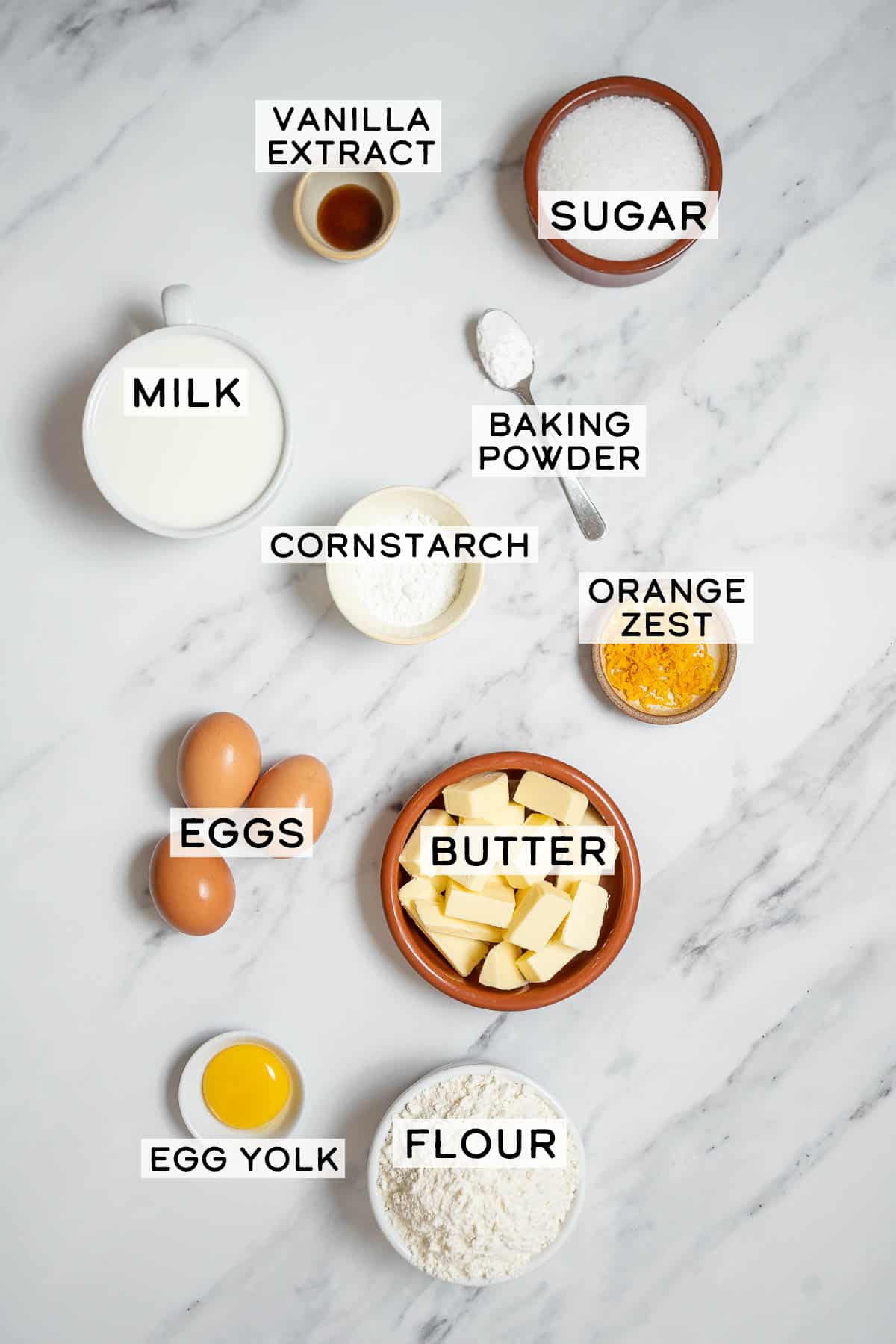
Wondering what ingredients you need to make your own gâteau Basque? Let's talk about the most important ones!
- Flour: You only need all-purpose (plain) flour--nothing fancy! Make sure to measure it accurately, preferably with a kitchen scale, for the best results.
- Eggs: They add richness to the cake batter, as well as thickening the pastry cream in conjunction with cornstarch. Use room temperature eggs in the cake for an even mix.
- Orange Zest: This adds a delightful citrus flavor to the pastry cream.
- Milk: You'll need milk for the pastry cream and the cake batter. Be sure to use whole milk for the creamiest result.
See recipe card for full information on ingredients and quantities.
Variation
- Cherry: Etch or use some of the cake batter to make a Basque cross (lauburu) on top of the gâteau, and fill with cherry compote instead of pastry cream.
How to Make Gâteau Basque
If you’d like to see the full ingredients and instructions, scroll to the bottom of the post for the printable recipe card.
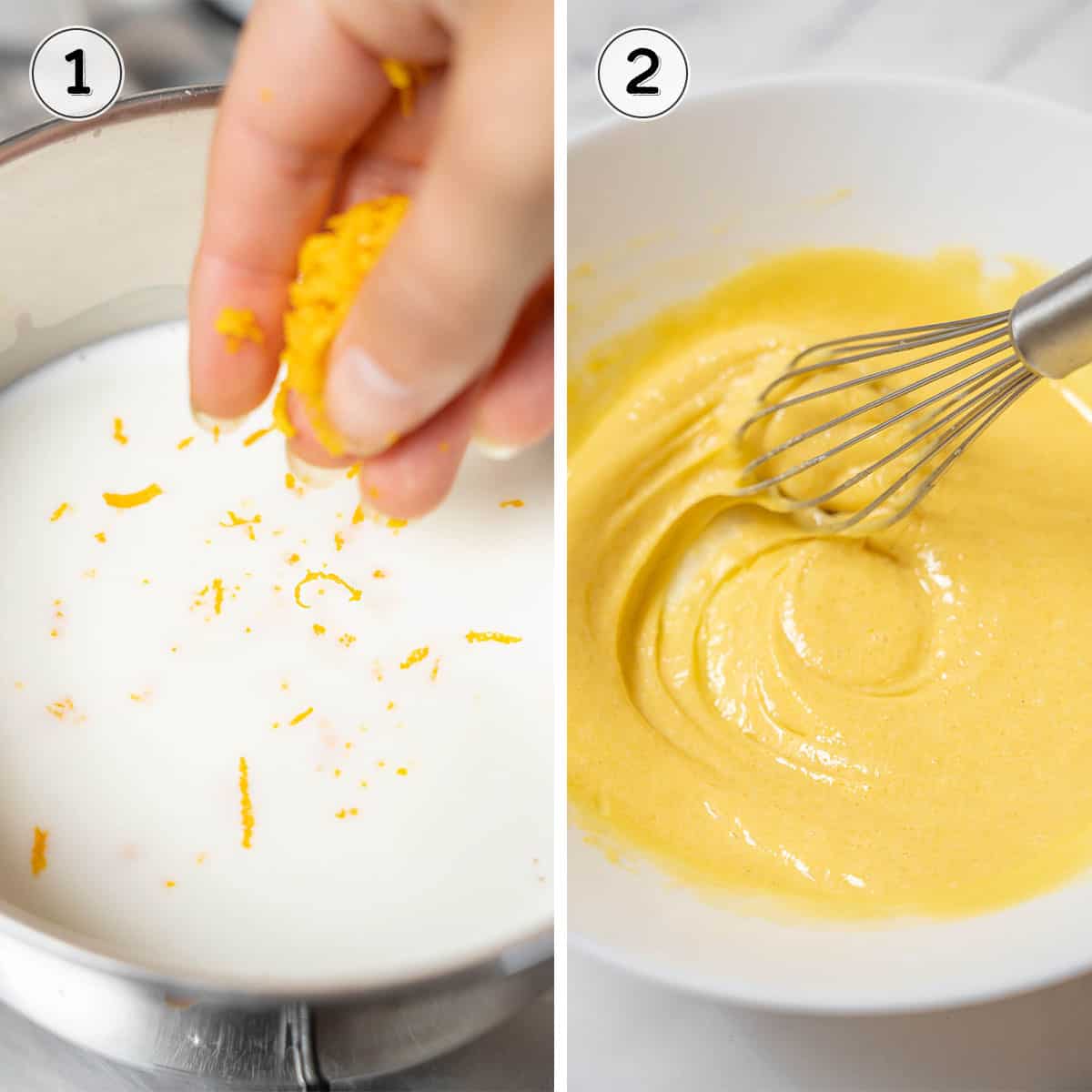
- Combine the milk and orange zest in a saucepan, then bring to a boil over medium heat. (image 1)
- Beat the egg and yolk, flour, cornstarch, sugar, and vanilla until well combined. (image 2)

- Gradually add the milk mixture to the egg mixture, whisking constantly, until it's fully incorporated. (image 3)
- Place the pastry cream over medium heat and whisk until it bubbles and thickens, about 3-4 minutes. (image 4)
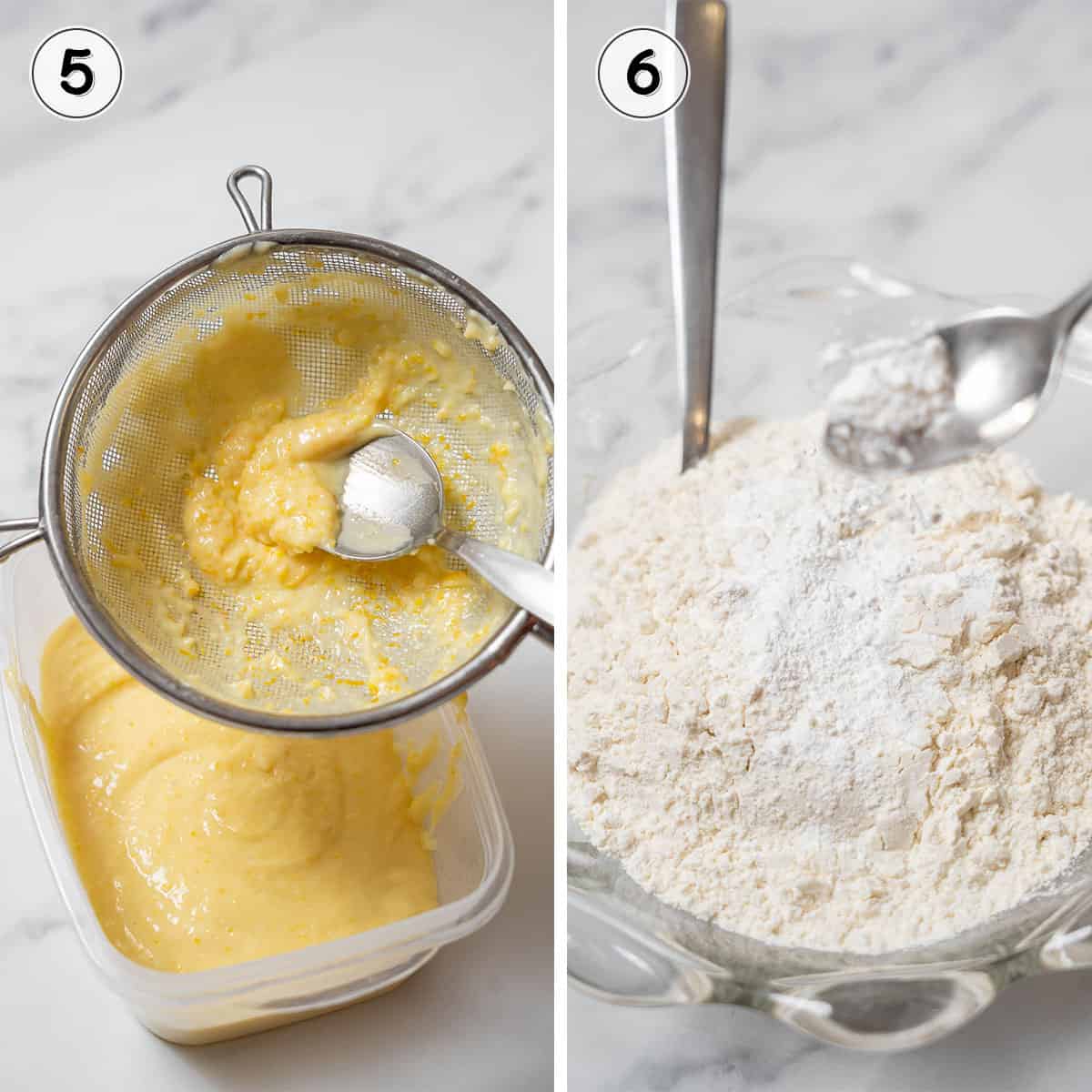
- Pour the pastry cream through a strainer to remove any lumps.(image 5)
- Combine the flour and baking powder in a large bowl. (image 6)

- Beat the butter and sugar in a separate bowl until smooth and creamy. (image 7)
- Add the eggs one at a time, beating well in between each addition. (image 8)
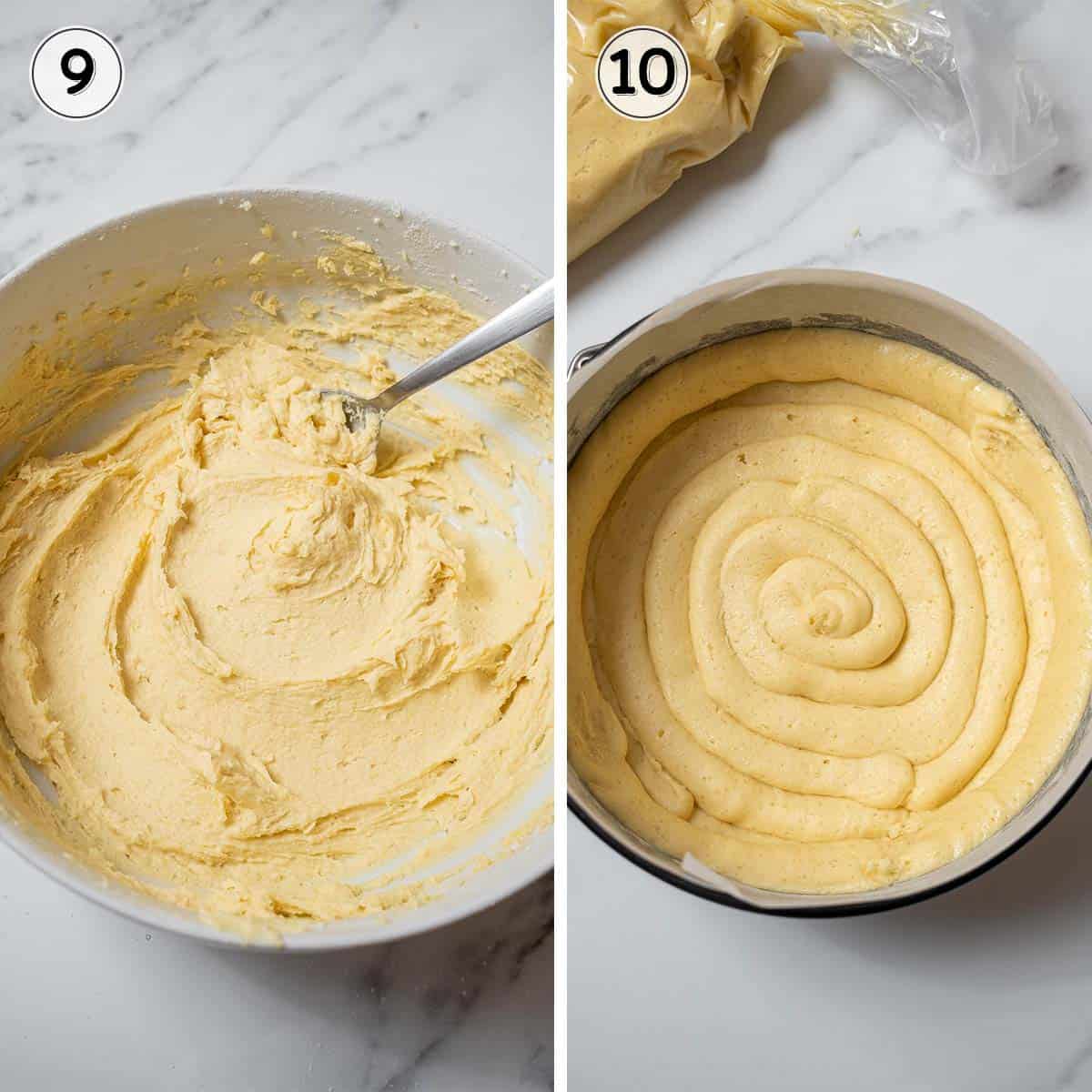
- Gradually add the flour mixture and stir until combined. (image 9)
- Grease and line a 7-inch cake tin with parchment paper. Pipe a a spiral of cake batter on the bottom of the tin, then pipe a circle around 1 inch (2 cm) up the side. (image 10)
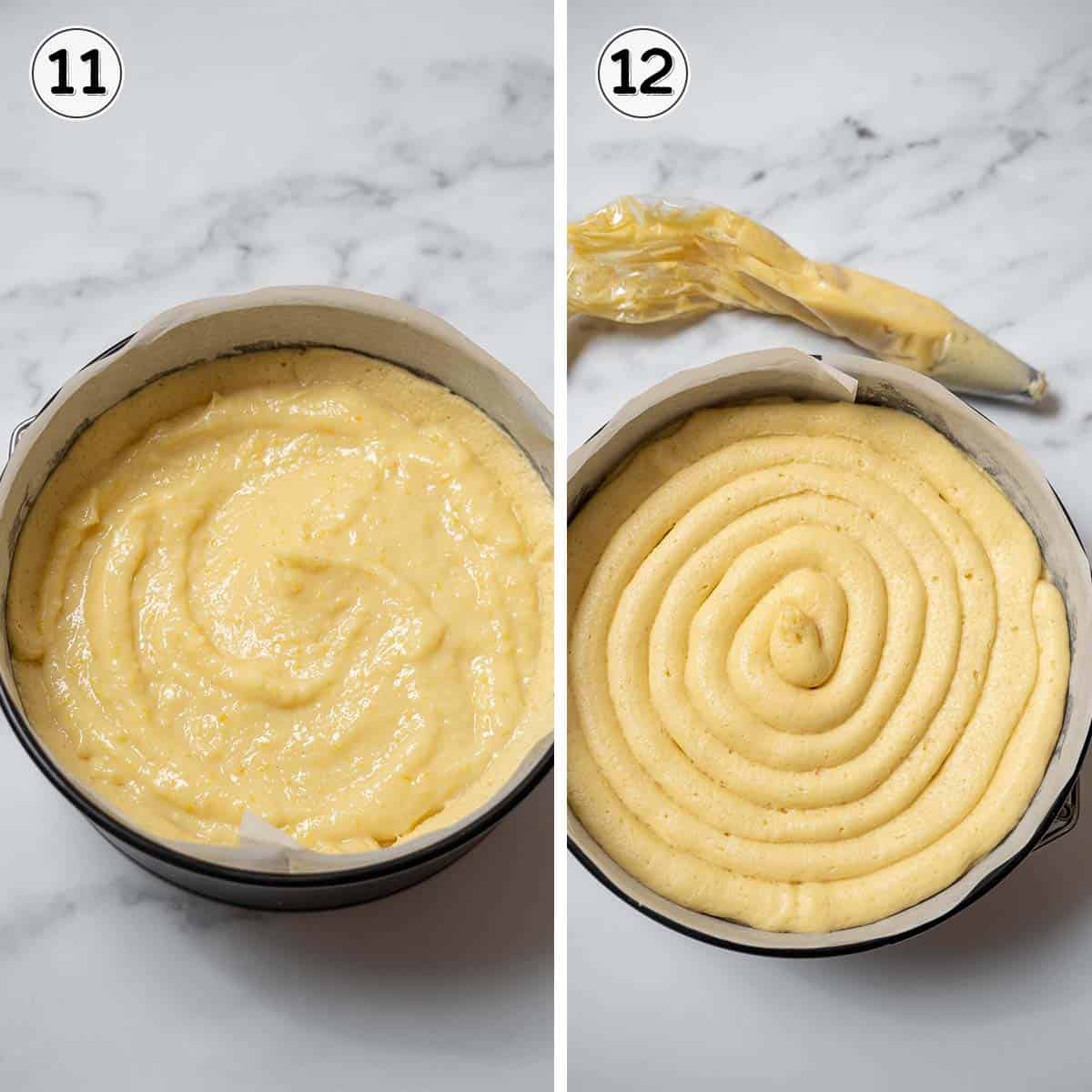
- Fill the center of the tin with the pastry cream, making sure to level the top. (image 11)
- Pipe the remaining batter on top of the pastry cream. (image 12)
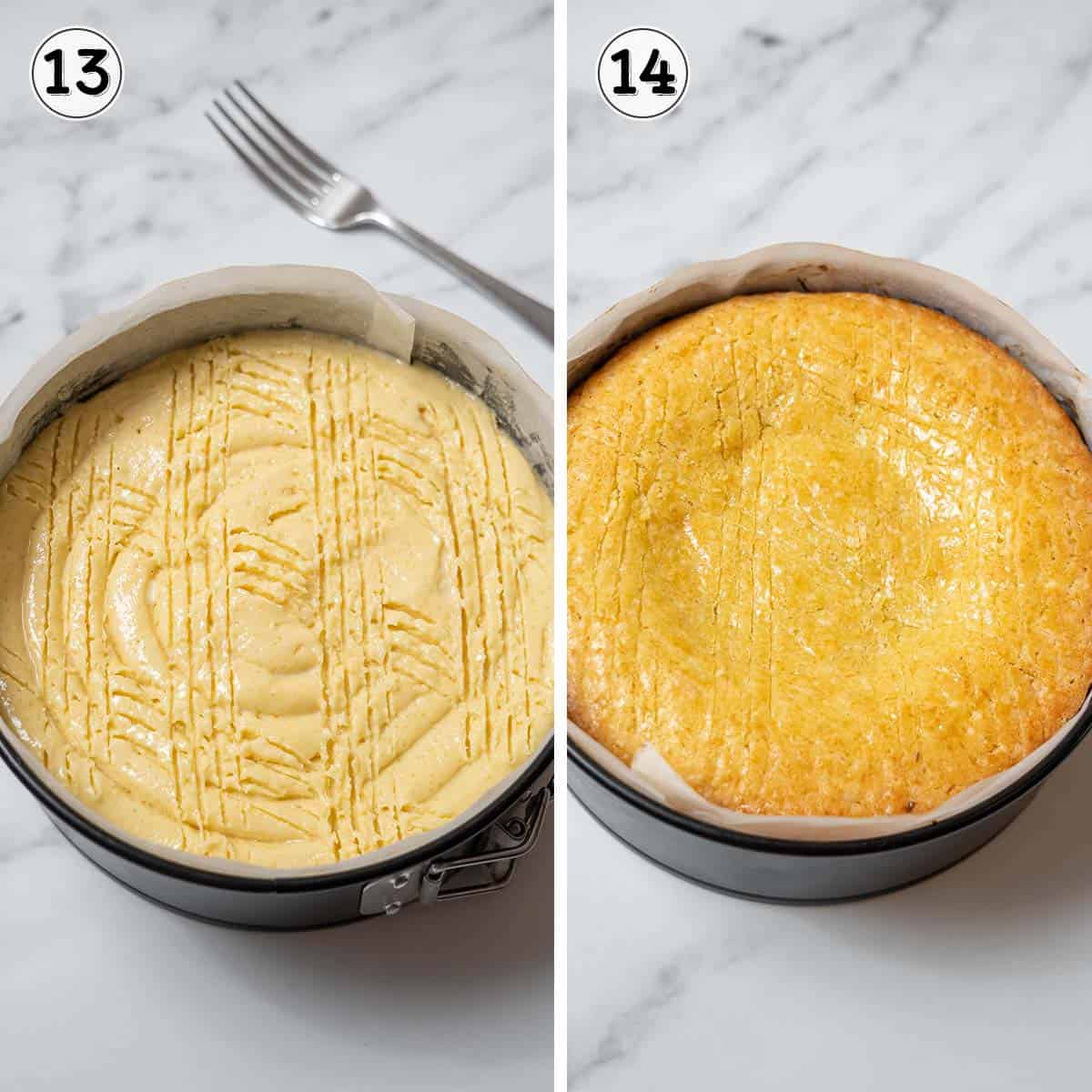
- Chill for 15 minutes, then brush the top with an egg yolk and milk mixture. Drag the tines of a fork across the top of the cake to make a crosshatched pattern. (image 13)
- Bake at 350°F (180°C) for 45 minutes, then let it cool. Serve on its own or with fruit jam or compote. (image 14)
Recipe FAQs
The name "gâteau basque" simply means Basque Cake. In the native Basque language, it is called etxeko biskotxa or “cake of the house.”
Fortunately, gâteau basque takes only 9 simple ingredients you probably already have. These are butter, sugar, eggs, flour, baking powder, milk, vanilla extract, orange zest, and cornstarch.
A gâteau must have a rich filling in between the layers of cake. Gâteau basque can either have pastry cream or cherry compote--both of which are rich and delicious fillings.
I would recommend storing leftover gâteau basque in the refrigerator because of the pastry cream inside. It will keep in the fridge for 3-4 days.
Serve
Gâteau basque is typically served with a cup of coffee or tea, or simply enjoyed on its own. If you made a pastry cream gâteau, you can also serve the slice with a spoonful of black cherry compote or preserves for a fruity touch.
Want to learn more about Basque cuisine? Here's my ultimate guide to Basque food. You'll also love these recipes for other Spanish desserts: burnt Basque cheesecake, Spanish flan, and arroz con leche.
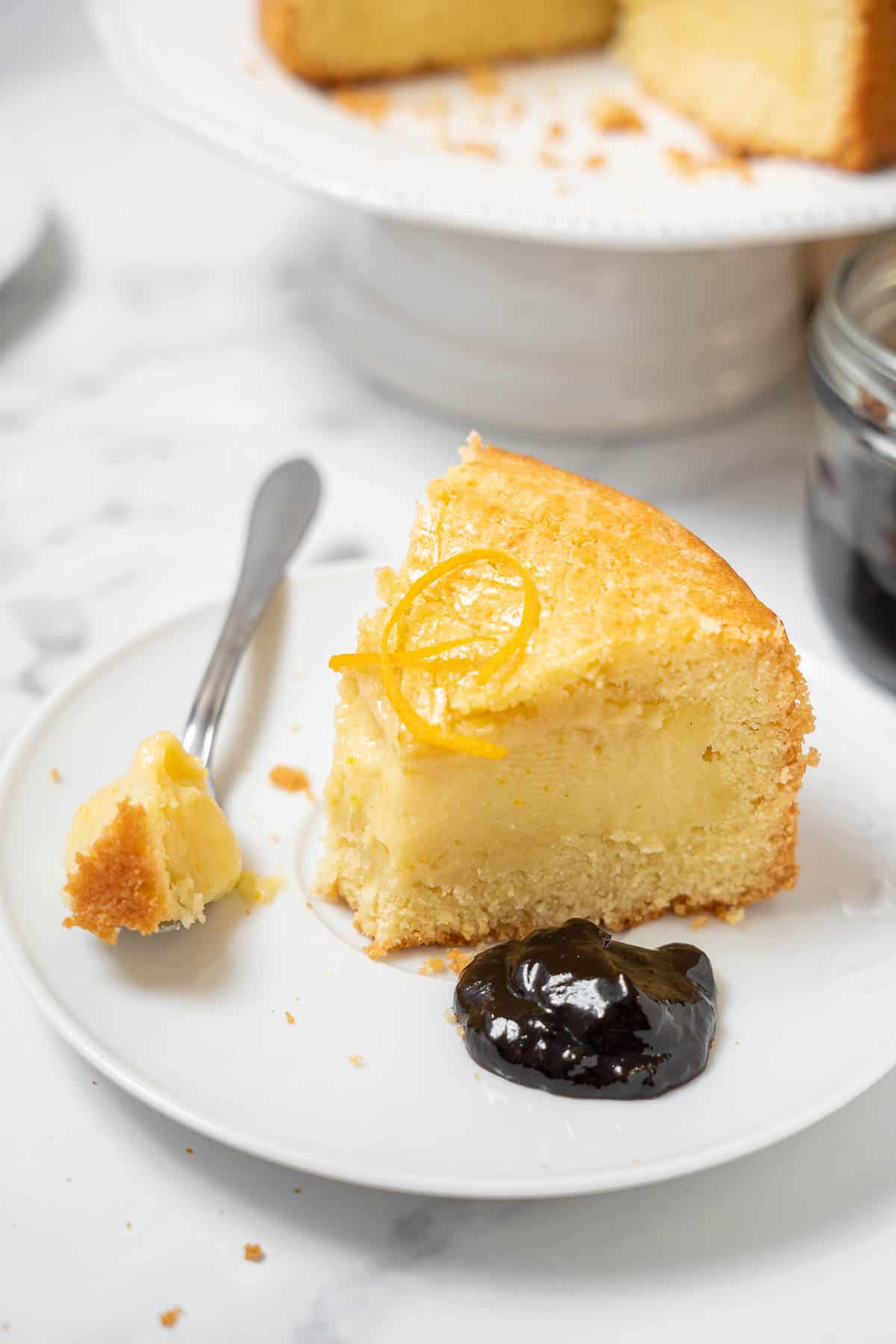
Expert Tips
- Whisk the pastry cream continuously when thickening it to prevent burning. Sieving it afterwards should remove any lumps.
- Be sure to use room temperature ingredients in the cake batter for a good texture and well-combined mixture.
- Want to try the cherry version of gâteau Basque? Skip the pastry cream and fill the gâteau with cherry preserves or compote. Use the cake batter to create a Basque cross (lauburu) on top instead of the crosshatched pattern.
If you liked this recipe, please share it with others!
Follow Spanish Sabores on Facebook, Pinterest, and Instagram for more recipes and travel tips.
If you've made and enjoyed this recipe, please leave a 5-star review!
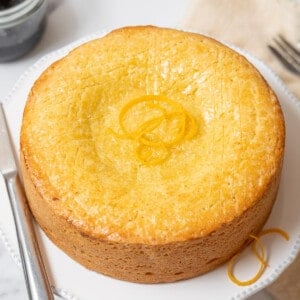
Gâteau Basque Recipe
Ingredients
For the Pastry Cream
- 1 ¼ cups whole milk
- 1 tablespoon orange zest
- 1 egg
- 1 egg yolk
- ⅓ cup granulated sugar
- ¼ cup all-purpose flour
- 2 tablespoons cornstarch
- 1 teaspoon vanilla extract
For the Cake Batter
- ⅔ cups unsalted butter softened
- ¾ cups granulated sugar
- 2 eggs at room temperature
- 2 cups all-purpose flour
- 1 teaspoon baking powder
For the Glaze
- 1 egg yolk
- ¼ cup whole milk
Instructions
Making the Pastry Cream
- Pour the milk into a medium saucepan, then add the orange zest and bring to a simmer.
- Meanwhile, beat the egg, yolk, flour, cornstarch, and vanilla extract until it's pale yellow, thick, and paste-like.
- Once the milk is hot, slowly add it to the egg mixture, whisking constantly.
- Pour the custard back into the saucepan and set over medium heat. Whisk constantly until the mixture boils and thickens, about 3-4 minutes.
- Push the pastry cream through a sieve into a heatproof container. Press a piece of plastic wrap onto the top to prevent a skin from forming, then chill in the fridge.
Preparing the Cake
- Preheat the oven to 350°F (180°C). Grease and line a 7-inch (18 cm) springform tin or cake tin with parchment, then lightly dust with flour.
- Whisk the flour and baking powder in a large mixing bowl.
- Beat the butter and sugar in a large bowl until smooth and creamy. Add the eggs (not the extra yolk) one at a time, beating well between each one.
- Gradually mix in the flour mixture until the batter is smooth and combined. Transfer to a piping bag fitted with a large round nozzle.
- Pipe a spiral of batter to cover the base of the tin, then pipe a single circle around the outside of the tin to form a wall about 1 inch (2 cm) high.
- Fill the center of the tin with the pastry cream, then smooth the top. Pipe the remaining batter over the top of the pastry cream to seal, making sure the top is smooth. Chill in the fridge for at least 15 minutes.
- Combine the egg yolk and ¼ cup (60 ml) of milk, whisking until well combined. Brush the mixture over the top of the cake and use a fork or knife to score a faint crosshatched pattern on top.
- Bake the gâteau until it's well risen and golden brown, about 45 minutes.
- Let the gâteau cool completely on a wire rack. If you used a springform tin, remove it from the pan after 10-15 minutes of cooling. Serve by itself or with cherry preserves.
Notes
- Whisk the pastry cream continuously when thickening it to prevent burning. Sieving it afterwards should remove any lumps.
- Be sure to use room temperature ingredients in the cake batter for a good texture and well-combined mixture.
- Want to try the cherry version of gâteau Basque? Skip the pastry cream and fill the gâteau with cherry preserves or compote. Use the cake batter to create a Basque cross (lauburu) on top instead of the crosshatched pattern.
Nutrition
Photography by Giulia Verdinelli


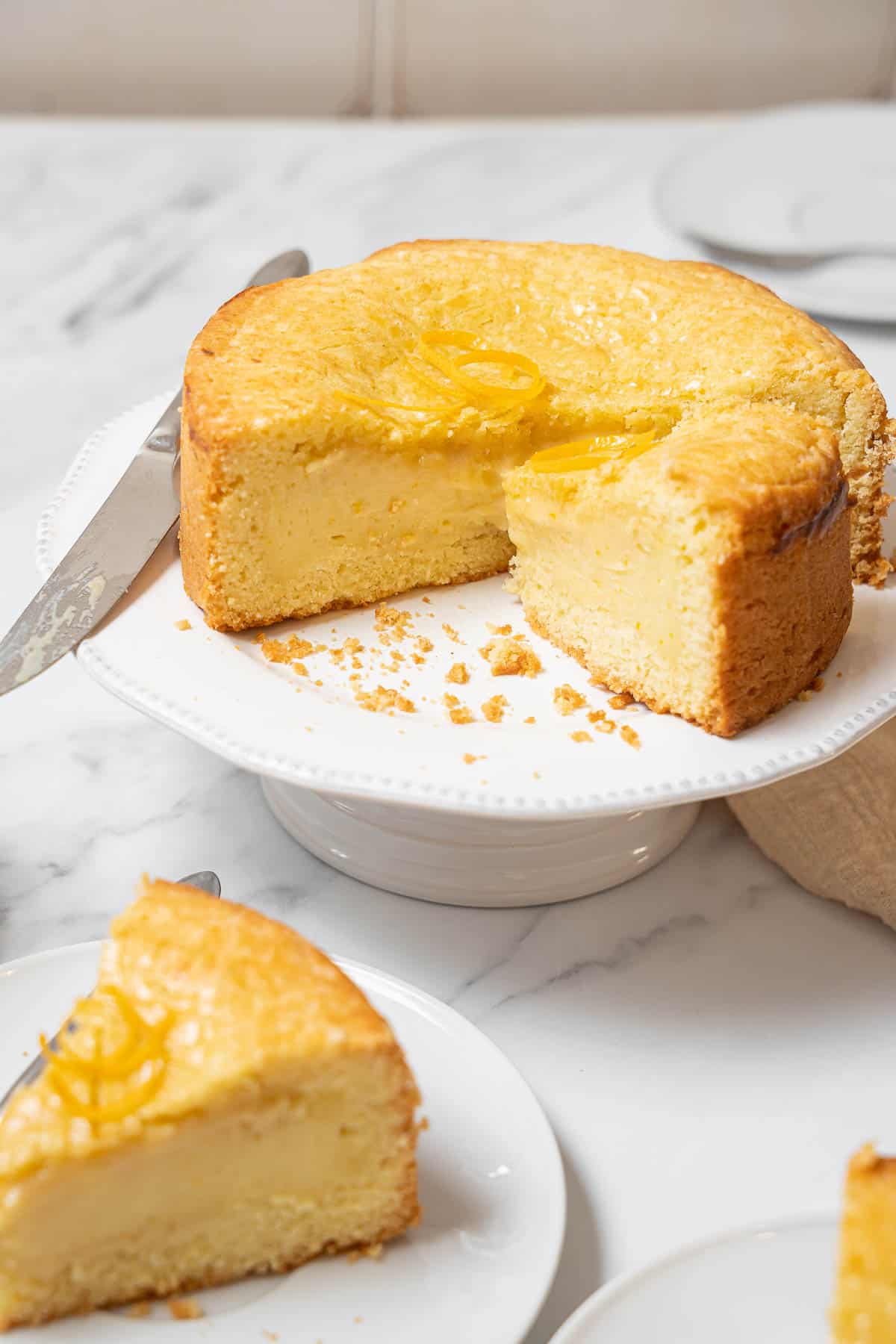
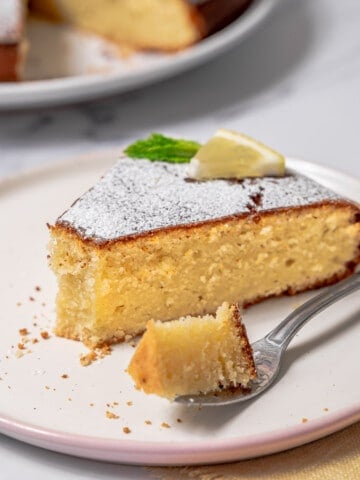
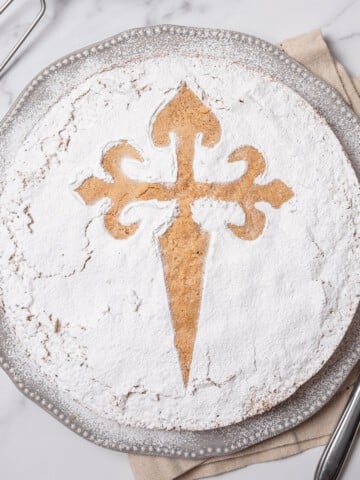
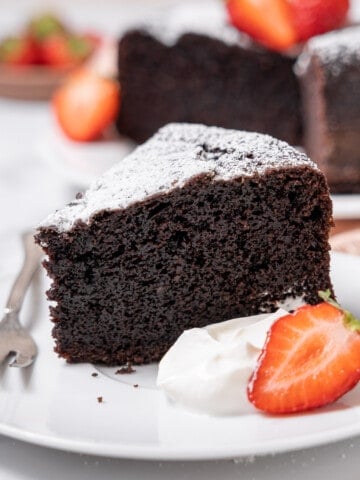
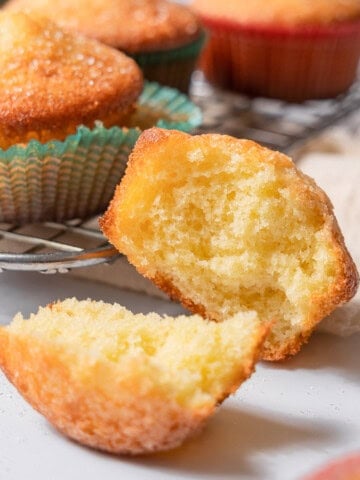
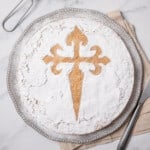
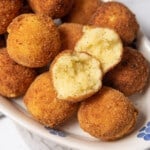
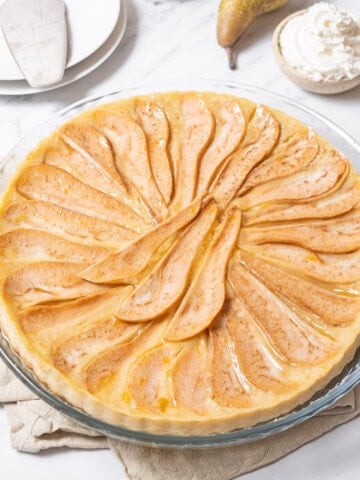
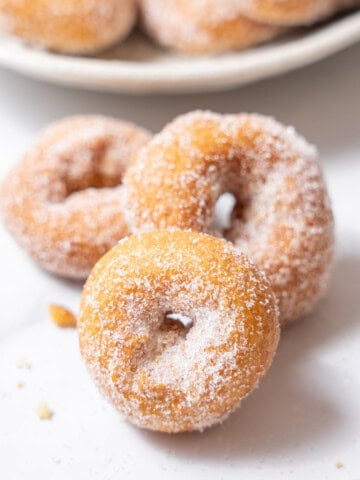
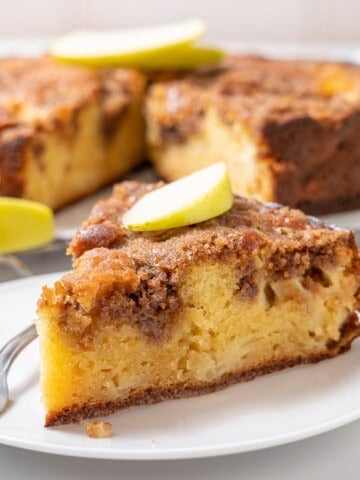
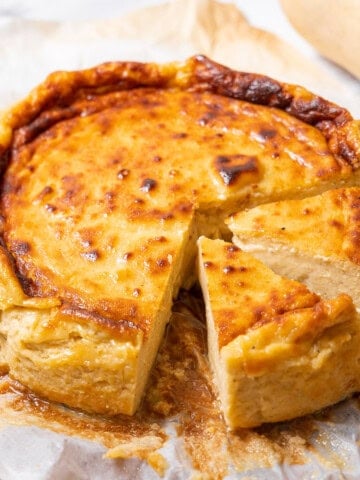
Helene
We loved it. Couldn't find oranges, so I used vanilla bean instead. I will definitely try it when oranges are in season again!
Mollie King
Can I substitute gluten free flour for the above recipe?
Lauren Aloise
Never tried it - I'm not familiar with GF flour. But give it a try and let us know!
Janet
I used Bob's 1 to 1 GF flour. The flavor was delicious but was hard to work with - meaning batter was thick and hard to get through the pastry bag. If you are used to GF baking....this is delicious and works perfectly, however, if you are trying to sneak in a GF modification....it will not go unnoticed. GF flour tends to offer a less creamy mouth feel and is heavier than regular flour.
Roseli D'Agostino
Hello!
I rushed to read the Gateau Basque recipe. When I visited Biarritz, then San Sebastian I fell in love with the cake. Although I have several recipes, they all lack the special flavor of the local cake, simply because they do not include the spices available in the Pais Vasco!
Your recipe is simple, does have pastry cream in the center (absent on in the Pais Vasco, but a great idea!), and lacks the spices I mentioned.
I went back to the areas I enjoyed, and tried to get the spices at several markets to no avail!
I will try your recipe, however, to me, it seems to be just a cake with the pastry at the center.
By the way, I am a travel agent, I give your website to my clients who enjoy cooking (and of course travel frequently). I do, of course, recommend your walking tours!
Right now unfortunately I have had NO clients to Europe from mid-February to now. All my bookings were delayed for Fall and next year; it is a very disappointing time to be in the travel business! Unfortunately this has also affected all the Caribbean bookings (for their wonderful beach resorts, we live in a Ohio, USA; our weather has been unusually cold!).
I HOPE AND WILL WAIT FOR "BETTER TIMES", WHICH SEEMS, EACH DAY, TO GET MORE AND MORE DISTANT.
Lauren Aloise
Hi there Roseli! It is indeed a difficult time to be in travel. Thanks for recommending my site. The traditional gateau Basque has either pastry cream or cherry jam in the middle -- and it is not spiced. Maybe you are thinking of another cake? Here's an article about it! But most pastry shops I've found in Basque Country sell the pastry cream version! https://www.france.fr/en/biarritz-basque-country/list/gateau-basque
ZJ
I agree with Lauren, there are no spices in the traditional Basque cake. I too, went to visit Biarritz, St-Jean-de-Luz, Bayonne and San Sebastian and didn't get a hint of spice in the cake. They only came in pastry cream and cherry jam in the middle.